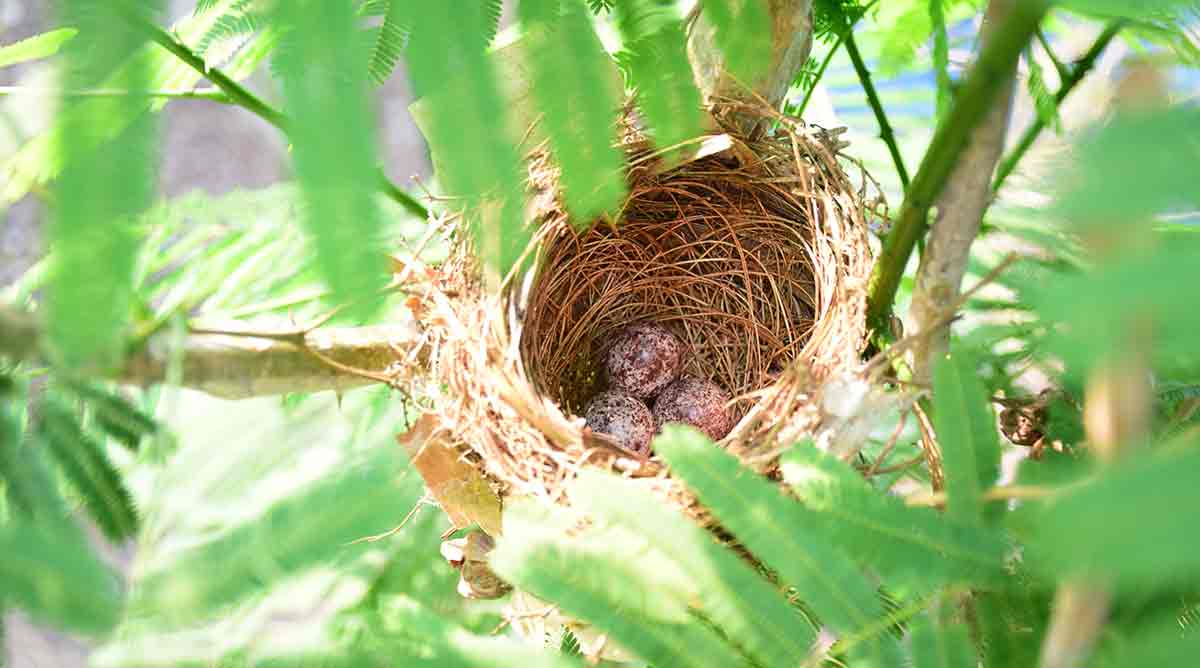Every year, a pair of house finches builds a beautiful nest right outside my office window. To be more precise, after reading up on house finches, I discovered it’s actually the female that is responsible for the manufacturing process, while the male sources and delivers construction material — typically stems, twigs and leaves. He also supplies her with food during the incubation period so she can tend to her eggs.
It looks pretty cozy up there, and seeing them always makes me think of my daughter, sitting with a book in the round Papasan chair in her college dorm room. It wouldn’t surprise me a bit to learn that the creator of the iconic rattan chair hundreds of years ago had the design of a bird’s nest in mind.
Birds have inspired countless innovations; the airplane being the most obvious case. In fact, the wing structures of seabirds were studied at length by the Wright brothers in the late 1800s.
Here are some other examples I recently encountered:
- Pinwheel-shaped wind turbines imitate the gravity-defying hovering ability of hummingbirds, which flap their wings in a figure-eight shape.
- The woodpecker’s multi-layered beak and skull are soft and absorbent, allowing them to dilute energy and protect their brains. Shields of similar design are proving effective at protecting delicate electronics and have the potential to enhance football player helmets and even insulate space shuttles from debris.
- As implied by its nickname, “The Bird’s Nest” in Beijing benefitted from the natural strength, beauty and efficiency of a nest and thus created a safer, healthier and more environmentally responsible structure at the 2008 Olympics.
- And, as the current edition of “Relevant Research” explains, the engineer of Japan’s bullet train incorporated the streamlined shape of a kingfisher bill into his design.
APICS magazine department author Richard E. Crandall, PhD, CFPIM, CIRM, CSCP, offers many interesting real-world applications of eco-focused approaches to innovation. Called biomimicry, this concept focuses on finding sustainable solutions to challenges by emulating nature’s time-tested patterns and strategies. Humans ask questions and observe the world around us, and then we replicate an existing feature, trait or capability to invent or advance something else. In other words, we mimic wildlife and call it technology.
There are countless solutions out there in the flora and fauna — and we are learning more about them every day. Mother Nature is indeed a first-rate problem solver. I encourage you to consider how she might help make your supply chain more efficient and productive. Start by reading “Relevant Research,” and see where she takes you.



